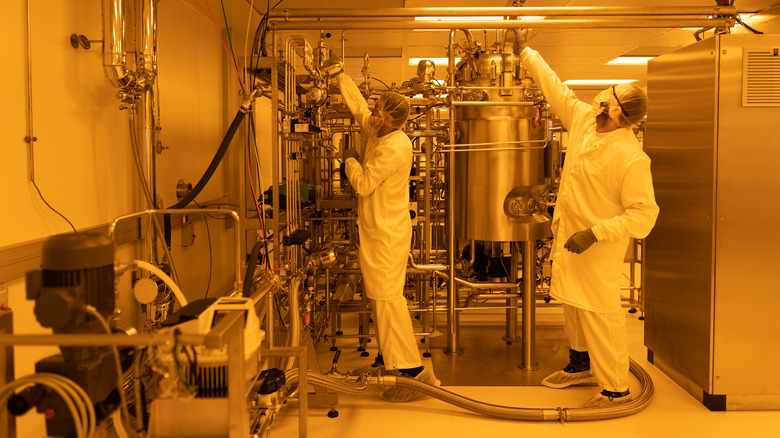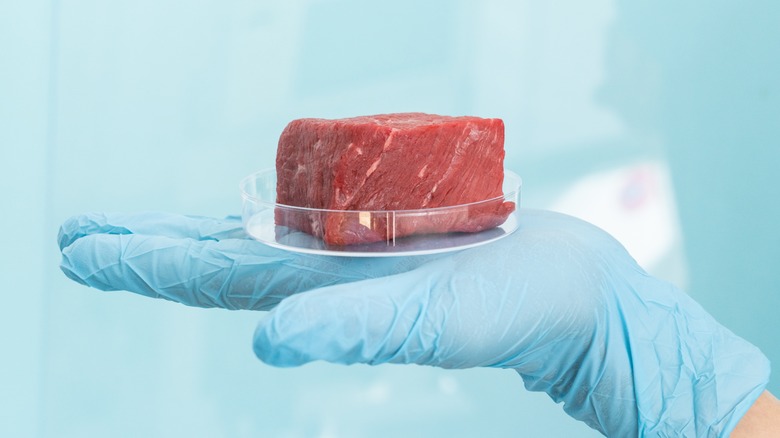The Interesting Way Legos Helped Create Lab-Grown Meat
Legos are more than toys. They challenge the imaginative powers of children and adults alike, driving us to achieve truly incredible things. Legos have been used by researchers to study child development, model city infrastructure, and even build scientific tools such as microscopes and spectrometers. The quest to push the envelope is never-ending, and one of Lego's latest scientific applications may be its most important. Surprisingly, the humble brick proved to be a critical tool in the development of lab-grown meat.
A joint team of scientists from Penn State and the University of Alabama published a study in which they used Legos to solve the biggest problem with lab-grown meat: Texture. Manufacturers have consistently struggled to advance the lab-grown product beyond the formless nature of ground meat. To solve this problem, the meat needs structural support in the form of a scaffold: A network of rigid fibers that holds the cells in place as they grow. The research team managed to build such a scaffold out of starch, and they did it with Legos. Using basic bricks and a Lego motor, they built a device that turns starch into a sturdy network on which lab-grown meat can propagate.
How lab-grown meat is made
First, we need to understand how meat can be grown in a lab. Also known as "cultured" or "cell-cultivated" meat, the formation of lab-grown meat begins with stem cell samples from livestock. These samples are acquired without slaughtering the animals — a crucial factor for both ethics and sustainability. Since cell samples can be multiplied for repeated use, lab-grown meat requires far less livestock to be kept, reducing animal waste and land consumption. These cell samples are placed in a machine called a bioreactor where they multiply. By adding different combinations of nutrients to the mix, scientists can turn the stem cells into muscle, fat, or connective tissue — the three elements of meat.
The issue with this method is that it differs from how cells grow in real animals. In an animal's body, muscle, fat, and connective tissue cells all grow together in a structured environment. However, in a lab setting, each element of meat must be grown separately and combined afterward. Without a structural backbone, these cells grow as an amorphous mass. That's why a scaffold is necessary, to provide a structure on which all the elements can grow together as they would naturally.
Scientists used Legos to build an electrospinner
If you're going to grow meat around a scaffold, that scaffold needs to be edible in its own right. Starch fibers prove to be an ideal material, as starch is both edible and cheap, but the fibers need to be extremely small if they are to be used in lab-grown meat. To get those fiber down to an ideal size, a device called an electrospinner is used to make them microscopic. However, electrospinners are typically used for nylon and plastics, not starch.
In order for the electrospinning process to be successful, part of the device must be placed in a wet solution of water and alcohol. Herein lies the problem. Typically, electrospinners are made of metal, but this one needed a material that wouldn't be conducive. The solution was to build the electrospinner from plastic, which the research team did using Lego bricks and a motor from the Lego Power Functions set. Their device was successful, but now the industry faces a new challenge. The plastic electrospinner must be scaled up if it is to be used on an industrial level. Legos won't do the trick anymore, but we couldn't have gotten this far without them.


